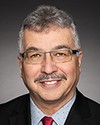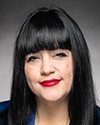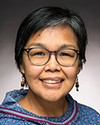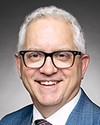Good evening, everyone. My name is Blaire Gould. I'm the executive director for Mi'kmaw Kina'matnewey, or MK for short.
I had hoped to witness in person; however, I am here at our annual symposium today and tomorrow, sharing and witnessing the efforts and excellence in each and every community, celebrating them and planning with them.
As MK, we actively engage our communities by customizing service delivery models that best fit their needs and aspirations.
I am a product of Mi'kmaw Kina'matnewey. I went to school in my community of Eskasoni from kindergarten to grade 12, and even had some post-secondary opportunities. I did not learn English until I was in grade three. At that time, I had my first non-indigenous teacher. For most of my schooling, I was taught by Mi'kmaq educators.
Today, I am the executive director for Mi'kmaw Kina'matnewey. Just 25 years ago, discussions at our leadership table involved a vision for children like me. They would have an opportunity to succeed and would be destined to become leaders. As I sit here, I often reflect that I am very grateful for those decision-makers who made decisions for children like me. Now today I have the honour and privilege of working with them to reflect on where we come from and the new direction we are shaping—informed by data and informed by our leaders in education.
Mi'kmaw Kina'matnewey has been in existence since 1997. The journey started in 1992. During that time period, our graduation rates have drastically improved from 20% to 90%. The 90% is consistent and has been for about a decade, maybe more.
We are the leaders in indigenous education. We walk that path with great respect, responsibility and humility. What has continued to evolve for us over the last two decades is our commitment to and passion for education. We set the bar higher for ourselves. We work to achieve those desires, those visions and those goals.
We are innovative. We truly believe that the key to our success is that we work collectively to promote excellence in Mi'kmaq education. Our model supports communities as they exercise jurisdiction in education to educate the youth according to their values and customs. We offer guidance to our communities across many areas, such as academics, healthy living and language and culture, but their autonomy has allowed them to shape and deliver programming that would otherwise be missed if we mandated a one-size-fits-all model.
Even though our communities have jurisdiction over their own education, our leadership is committed to working together. The chiefs from each of our communities make collective decisions about important matters such as finances and capital infrastructure. They have made those hard decisions and sacrificed additions to their own communities for years to help other communities that may be in pursuit of exercising their jurisdiction within their own community so that they can have an opportunity to build. They support each other, knowing that what they do is for the betterment of the nation. It seems to work for us.
Our student attainments and achievements in elementary and secondary—not just in academia but strongly rooted in their identity—translate into great success in post-secondary education. We have high, excellent rates in post-secondary and their achievements continue on.
We are not here to say that everything is perfect. We struggle, as do most, but we want to reinforce that working together, for us, has certainly rewarded us in many great ways. We wanted to share a little bit of our journey.
We continue to stand together as a united front and we encourage every community, learner and teacher to reach for their goals and to show the world what we can do when we work together.
Wela'lioq.






